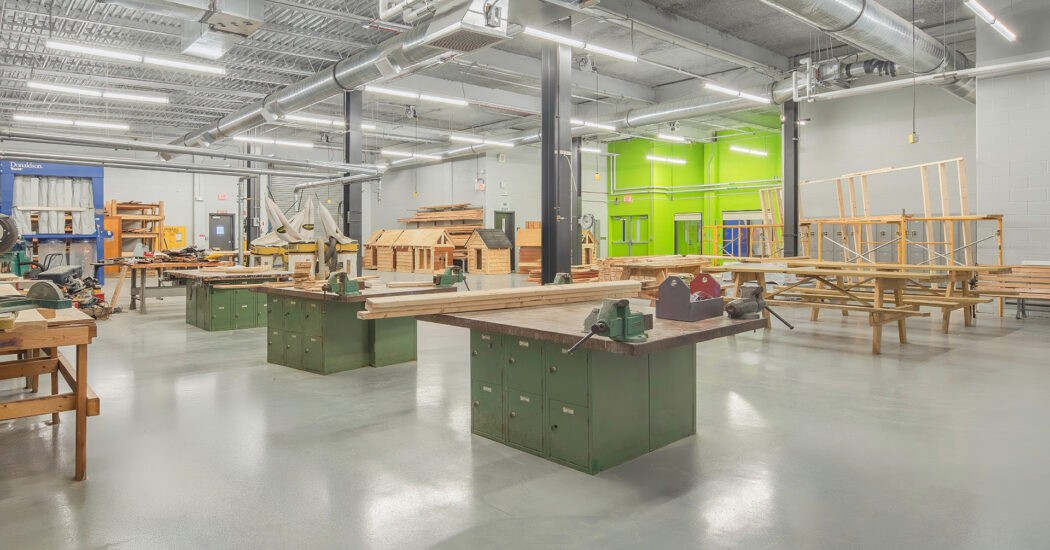Designing & Building Successful Co-Working Spaces
-
Category
Studio-Workplace, Innovation -
Posted By
Eddie Layton -
Posted On
Oct 30, 2018
Like mentioned in my previous blog, co-working spaces are becoming increasingly popular in the United States. Although Europe has been ahead of the game when it comes to fostering a healthy work environment for individuals who don’t work a standard in-office, 9-to-5 type of job, the United States is in no way behind in terms of innovation. New co-working spaces popping up in major cities, like New York, Denver, and San Francisco, are demonstrating how to be more than just “a space to work together”. These spaces are being designed and built in such a way that creativity, collaboration and productivity aren’t just cultivated – they’re actually given the environment and community they need to thrive.
So, what are some elements that you should take into consideration if you’re thinking about designing and building a co-working space?
1. Get Connected. Create a co-working space that allows for people to connect to the internet with as much speed as possible via Wi-Fi and hardwire. For some people, a Wi-Fi-only co-working space isn’t as appealing as it might sound. When designing a co-working space, ensure that gives access to both types of connections.
2. Provide Options. Different types of work require different types of settings. And, work for everyone who uses your space might change from day-to-day. It’s important to offer options for people to choose from as needed – dedicated desks for focused work, library or co-working tables for coffee-shop work, and even small offices for private meetings and phone calls.
3. Offer Storage. The best co-working spaces give people a place to store the items they don’t need while working, like workout gear or after-work clothes. When designing your co-working space, be sure to include a locked storage space for members who would want to take advantage of that courtesy.
4. Consider Dimensions. The dimensions of your co-working space need to be just right in order for people to actually enjoy what they came to do: work. In most instances, you’ll want to opt for higher ceilings (ideally a minimum of 10 to 15 feet) and co-working desks that are at least 3 feet wide by 2 feet deep. If you want to offer dedicated desks for members, these should be at least 2 feet by 5 feet. Larger multi-person work stations are often built to be 6 feet by 6 feet with filing cabinets and storage built-in below.
5. Create a Courtyard. If you want your co-working space to be a place that people really enjoy working at, then you need to create some sort of indoor or outdoor courtyard in your design. This open space, which is ideally centrally located and connected to the main work areas, drastically improves the overall environment. It gives people a sense of community because it’s a great opportunity to mingle – if everyone is stuck at desks, you’re not creating much of a chance for workers to get to know each other. Including a garage door near this area is perfect for bringing in food trucks and creating a cool, relaxed social space during events.
6. Think “Neighborhood”. You want your co-working space to be designed with “neighborhoods” or pockets – not just one big park. The most attractive co-working spaces are the ones that have specific areas for people. Just like certain neighborhoods appeal to certain people at specific times in their lives, your co-working space should have an opportunity for everyone to feel like they belong.
7. Personal Touches. Popular co-working spaces always have a great personality. Whether you choose specific art and lighting or design elements like plants, consider the “vibe” you want workers to experience the moment they walk in. While you don’t want your space to feel overwhelming or chaotic, you absolutely want to avoid anything that feels impersonal or mass-produced.
8. Lots of Light. The more natural light your co-working space has, the more popular it will be (and you can charge more, too). When possible, design your space with as many windows and opportunities for natural light. While it’s tempting to put all your office spaces at the windows, it’s important to leave a lot of the natural light for your co-working spaces too. Glass walls or walls of windows are popular choices for current designs, but be sure you know your audience before you invest in that style. Too much light and not enough privacy can be an issue for some workers, so it is important to control transparency.
9. Be Convenient. Don’t overlook conveniences in your co-working space, such as a place for members to print, receive mail, enjoy coffee, etc. There should also be a plethora of outlets for people using your co-working space, as it’s not strange for people to need or want to plug in several different devices at once. Being convenient in location doesn’t hurt, either.
One of the most important factors of designing and building a great co-working space is knowing who you’re creating your space for. Don’t just choose elements because they seem cool or because you’re under the impression that they’re “what’s in” right now. Your space needs to be appealing visually, yes, but also practical – that’s the only way you’ll keep members in the long-run.







